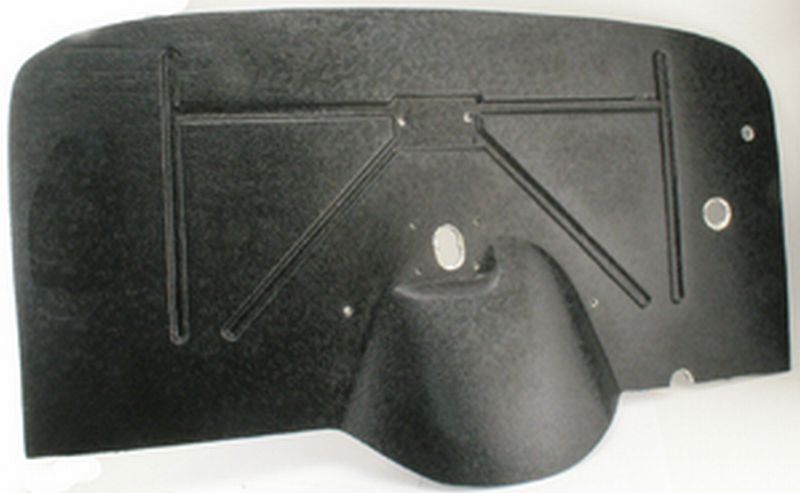|
|||||||
| Sponsored Links (Register now to hide all advertisements) |
|
|
 |

|
Thread Tools | Display Modes |
|
|
#21 |
|
Senior Member
Join Date: May 2010
Location: Shreveport,La.
Posts: 332
|
H.L. Chauvin you are saying that all the insulation we add to the doors overhead and the floorboards would do much better with 1" of air space between the cars sheet metal and the insulation. Correct!
|
|
|

|
|
|
#22 |
|
Senior Member
Join Date: May 2010
Location: Mpls, MN
Posts: 27,582
|
For best results, foil faced insulation needs an air space, but even without the air space, it still helps.
|
|
|

|
| Sponsored Links (Register now to hide all advertisements) |
|
|
|
|
#23 |
|
Senior Member
Join Date: Jun 2014
Location: Miramar Fl
Posts: 195
|
|
|
|

|
|
|
#24 |
|
Senior Member
Join Date: May 2010
Posts: 4,179
|
Hi Robert,
1. Per reply #21: A. If a sheet of aluminum foil has absolutely no adjacent air space on one side, it is totally impossible for it to reflect radiant energy when facing the radiant heat source; & likewise, if a sheet of aluminum foil has no adjacent air space on the other side of the foil, it is totally impossible for it to reduce radiant energy emission when facing in the opposite direction of the radiant heat source. B. A sheet of aluminum foil sandwiched between two adjacent materials with absolutely no airspace between said materials & the aluminum foil can neither reflect radiant energy, nor can it reduce radiant energy emissions. C. The automotive aluminum faced sound deadening materials offered with an adhesive bituminous backing has no air space on the bottom or back adhesive side; however, if provided with the aluminum side adjacent to an air space, (like in doors, cowl areas), it can reduce radiant energy whether facing towards or away from the radiant energy source; & if the aluminum foil side is "not" adjacent to an air space, it cannot reduce any radiant energy. D. Recently, there are lots of recent salesman's nonsense ads on this radiant barrier subject; however, this laboratory tested product data has been around since the 1920's with most experiments carefully conducted by the Reynolds Aluminum Company. In the 1930's Reynolds manufactured extremely energy efficient but expensive wall insulation with three layers of aluminum foil to be stapled between studs & rafters. E. FWIW: On the immediate undersides of building roofs, if one provides thick conventional insulation with an R-Value of 30 or more, the addition of a reflective aluminum radiant barrier above or below facing an air space has almost no effect in further reducing radiant energy heat gain. F. The air encapsulated in Bubble Wrap mentioned by Mr. Purdy, & the Ag encapsulated air space mentioned in Mr. Tom's reply should have some value as an air space which may be written somewhere if one wants to researche same. 2. Also FWIW in commenting on reply no. 23: A. Laboratory test on automotive sound deadening materials indicate that when two (2) layers of sound deadening materials are provided on automotive sheet metal, the sound deadening effect provided by this doubled material layer has more than tripled the sound deadening effect. B. On the in-side of my firewall I provided two (2) layers of advertised automotive sound deadening material with the aluminum foil face facing the interior. C. Next, with Scotch double-sided tape, I adhesively applied a few 3/4" wood strips on the in-side of the aluminum foil to create a 3/4" airspace. D. Lastly I screwed the insulated inner fire wall panel indicated in #23, (made by "Quiet Ride"), to the 3/4" wood strips, all of which greatly reduces both radiant energy heat gain from the engine & also reduces engine noise, that is, until I open the windshield in the summer. LOL Hope this helps. Last edited by H. L. Chauvin; 07-19-2014 at 10:26 AM. Reason: typo |
|
|

|
|
|
#25 |
|
Junior Member
Join Date: Feb 2014
Location: South Texas
Posts: 2
|
X3 on the Home Depot stuff, although I bought it at Lowes. Works like Dynamat, it's a bit thinner but it works well. 25'x6" roll for 16 bucks, I used a roll and a half for a whole car (53 Chevy) including trunk, can't beat it.
|
|
|

|
|
|
#26 | |
|
Senior Member
Join Date: May 2010
Location: Bucks Co, Pa
Posts: 3,740
|
Sponsored Links (Register now to hide all advertisements)
Terry Quote:
|
|
|
|

|
|
|
#27 |
|
Senior Member
Join Date: Jun 2014
Location: Rocklin, CA
Posts: 779
|
Quiet Ride makes complete kits with all the material cut to fit various body styles. (209) 942-4777 quietride.com
|
|
|

|
|
|
#28 |
|
Senior Member
Join Date: May 2010
Location: Alabama
Posts: 8,099
|
I bought an aluminum foil backed product with air bubbles that is made to put inside the windshield to keep heat out of the car when parked in the parking lot. Walmart sells this product and it comes in large enough pieces that it can be cut and used under the floor mats in the model A. It works good for me and I can get it locally. I also use the firewall shield similar to the one pictured in post #23 . I got my firewall shield from Brattons and it works good.
|
|
|

|
 |
«
Previous Thread
|
Next Thread
»
|
|
| Sponsored Links (Register now to hide all advertisements) |
|
|
All times are GMT -5. The time now is 11:52 PM.










 Linear Mode
Linear Mode

